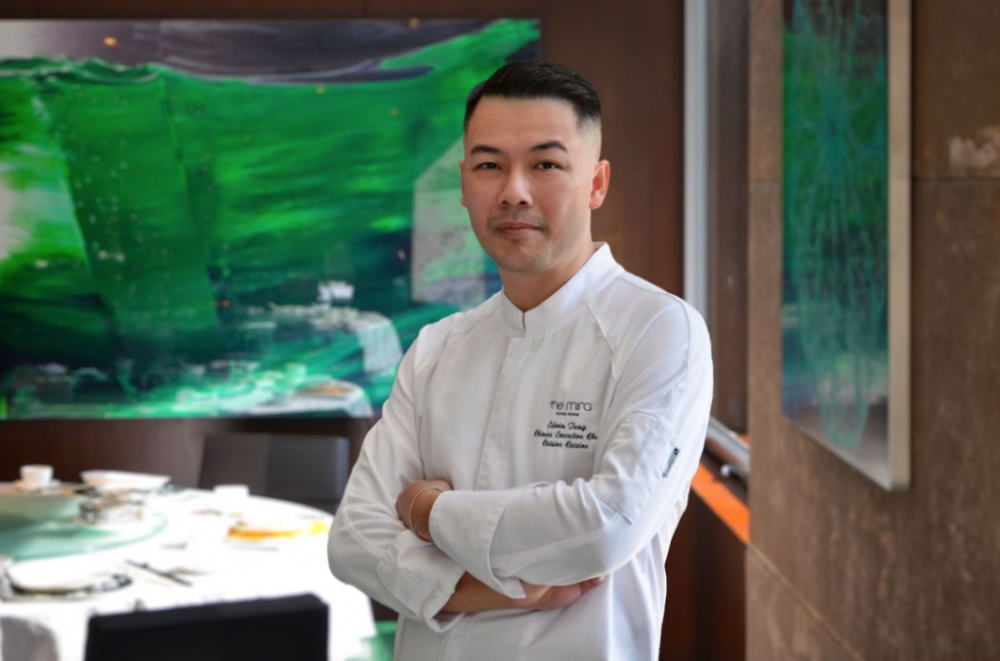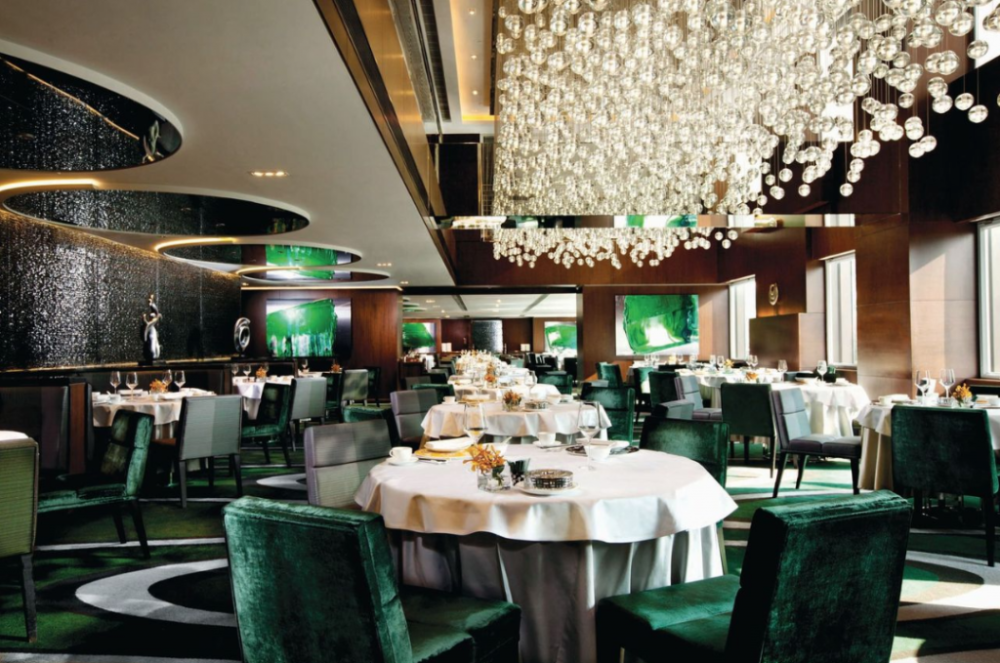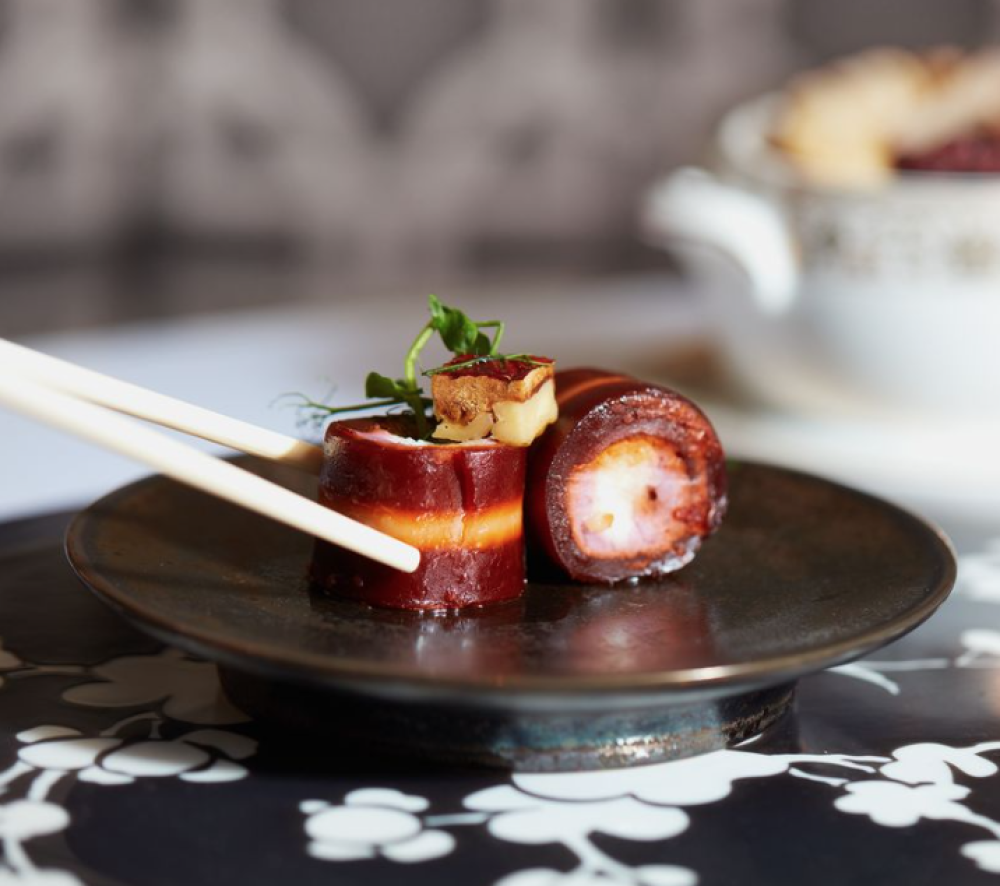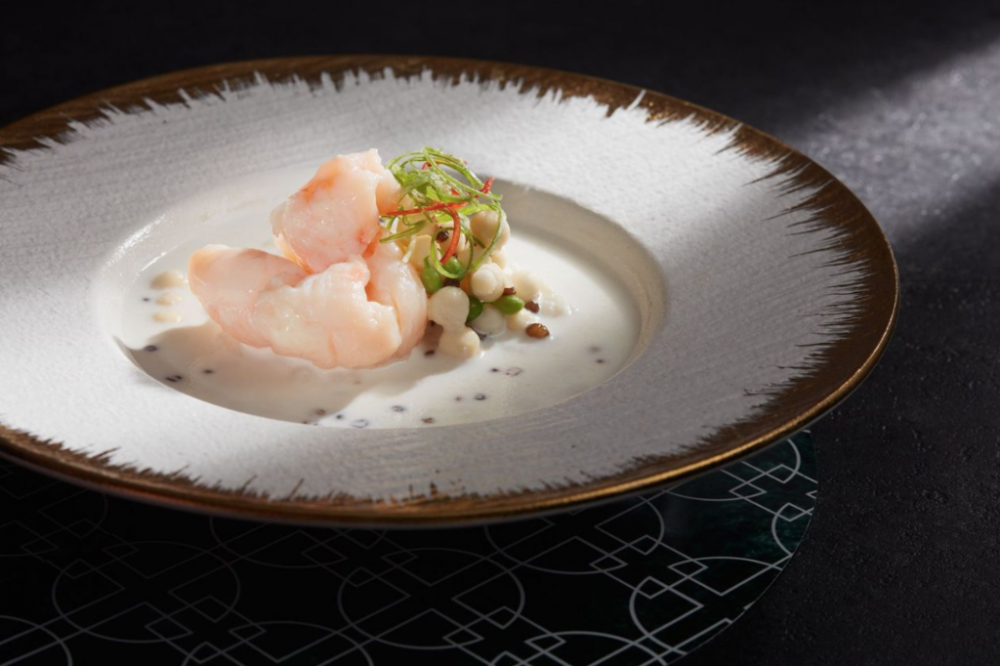Chef Edwin Tang on infusing TCM with cuisine
Apr 12, 2024
Chef Edwin Tang of Cuisine Cuisine at The Mira shares with David Ho how he incorporates the tenets of traditional Chinese medicine (TCM) into his latest menus

Eating well translates to living well. It’s something that Chef Edwin Tang of Cuisine Cuisine at The Mira understands well. He has embraced this concept and drawn from TCM philosophy to guide his cooking for his nourishing Spring Equinox menu.
With a symphony of flavours featuring precious roots, mushroom, herbs and berries highly valued for their TCM properties, Tang has come up with thoughtfully crafted dishes designed to promote health and wellbeing, taking into consideration the seasonal changes in Hong Kong.
From now until 30 April 2024, six sumptuous delicacies are presented in a tasting menu format, with selected dishes available for ordering from the a-la-carte menu. Highlights include the poached Australian lobster with gorgon fruit, soy milk and gelatinous nostoc sphaeroides; double-boiled Wagyu beef cheek with aged tangerine peel, expertly prepared with two roots: codonopsis pilosula (dangshen) and astragalus (huang qi); double-boiled chicken soup with fresh Korean ginseng and schisandra; steamed red date pudding roll stuffed with taro, Chinese yam and walnut; and more. Vegetarian alternatives are available with some notice.
Tang tells us more about he uses his culinary creations to help diners maintain a balanced lifestyle.

What are the properties that one needs in their food as recommended by traditional Chinese medicine (TCM) philosophy?
Strengthening the body’s resistance to outside factors, improving the flow of energy throughout the body, and increasing overall vitality and functioning of the organs are some of the key objectives of the TCM. Nourishing foods that restore Qi, replenish spleen, help to decongest the liver, improve clarity and cognitive functions, and strengthen vital organs such as lungs and heart are by definition key aspects anyone should take into consideration when talking about proper nutrition.
What led you to incorporate TCM into your cooking?
Modern day living in a vibrant, fast-paced metropolis such as Hong Kong brings many challenges to our bodies. These stress points can accumulate causing strain and exhaustion or compromise our immunity, especially during the turn of the seasons from cold and wet months of winter to warm and humid arrival of spring.
I have great interest in the culinary tradition of Hong Kong and immense respect for the Chinese culture. Hong Kong Chefs follow basic principles of TCM beliefs, incorporating seasonal ingredients that are warming and comforting in autumn and refreshing and cooling in summer, but I always wanted to create a dedicated menu that integrates TCM principle.
Spring Equinox is a perfect time to introduce a nourishing menu boosted with balancing properties of correctly used TCM ingredients, which feeds the life force “Qi” and is key to a balanced lifestyle.

Please tell us about the inspiration behind this menu.
The new nourishing menu sprouts from the concept of “Harmony” that is deeply rooted in ancient Chinese tradition and stands at the heart of the culinary philosophy of Cuisine Cuisine restaurant.
Translating it into modern Cantonese culinary creations, the multi-generational Culinary Team of Cuisine Cuisine consisting of both experienced and young Chefs curated a menu embodies: Harmony of People, Harmony of Ingredients, and Harmony of Flavours.
Our intention was to create a deliciously harmoniously culinary experience that can enhance our guests’ well-being.

How do you deal with the traditionally medicinal tastes that is associated with TCM ingredients?
The portions of ingredients with a stronger, more pungent or medicinal taste should be adjusted appropriately as to not overpower the flavour of the dishes. After all, they are the nutritive condiments so to speak and we wish for our guests to enjoy a well-balanced culinary experience. The right combination of appropriate ingredients also helps with achieving this balance by harmonising the flavours which are attributed with the medicinal taste.
At the same time, in the dishes featured in the Nourishing Menu of Cuisine Cuisine, we have purposefully selected some of the ingredients that add a new dimensions of flavour – such as Shizandra (Five Spice Fruit) offering slightly spicy, refreshingly tangy, gently pungent notes to the Double-boiled soup prepared with precious Korean Ginseng. Meanwhile, the roots featured in the Beef-cheek main course add earthy, grounding flavours, subtle sweetness akin to licorice, and texture one may be familiar from other root vegetables such as burdock, which aren’t new to Chinese cuisine.

Are there vegetarian/vegan friendly options on the new menu? How do you accommodate dietary requirements while still serving up something delicious and nutritious?
Actually, three of the dishes on the menu are already prepared without meat or seafood. The red date roll with taro, yam and walnut which is delicately sweet and very satisfying. Steamed baby amaranth greens with lily bulbs, yellow fungus and goji berries are a very nutritious, gentle and nourishing. Also the delicately sweet soup with double-boiled aloe vera.
As for the seafood dish and beef cheek, we can easily replace the animal protein with plant-based alternatives of lobster and mushroom, which are served with the same TCM ingredients such as gorgon fruit and Nostoc, and earthy roots used in the beef cheek dish.
Our Culinary Team is aware of diverse lifestyles and dietary requirements our guests from Hong Kong and international backgrounds have, which we are more than happy to accommodate.

The weather is heating up with summer upon us soon. What are your recommendations in terms of switching up what we eat to suit the season?
With the arrival of summer, diners should switch to consuming lighter food and use mild medicinal herbs. Because the weather in Hong Kong is exceedingly hot and damp, increasingly so year on year, making us feel uncomfortable, consuming heating, strongly flavoured, fried food, will make one even more susceptible to the environment. One should consider incorporating lighter and naturally cooling foods such as vegetables and fruits, such as leafy greens, bitter melons, cucumbers, celery, decongesting spices that help with digestion such as cardamom, and add them in abundance into their favourite Cantonese dishes. You’ll be able to find them on seasonal menu at Cuisine Cuisine this summer.
Also see: W Macau’s Samio Choi on creating Macau-inspired cocktails and mocktails



























